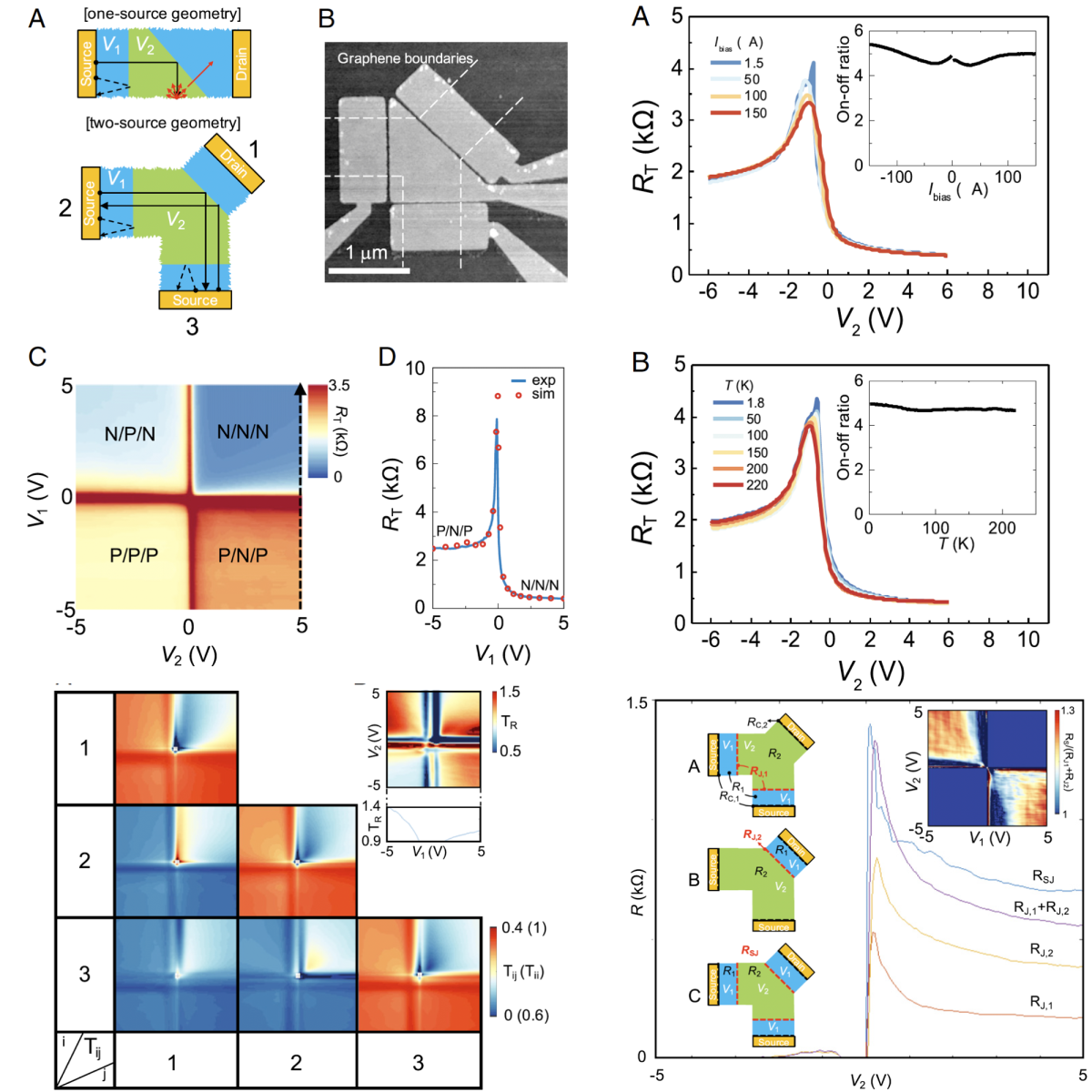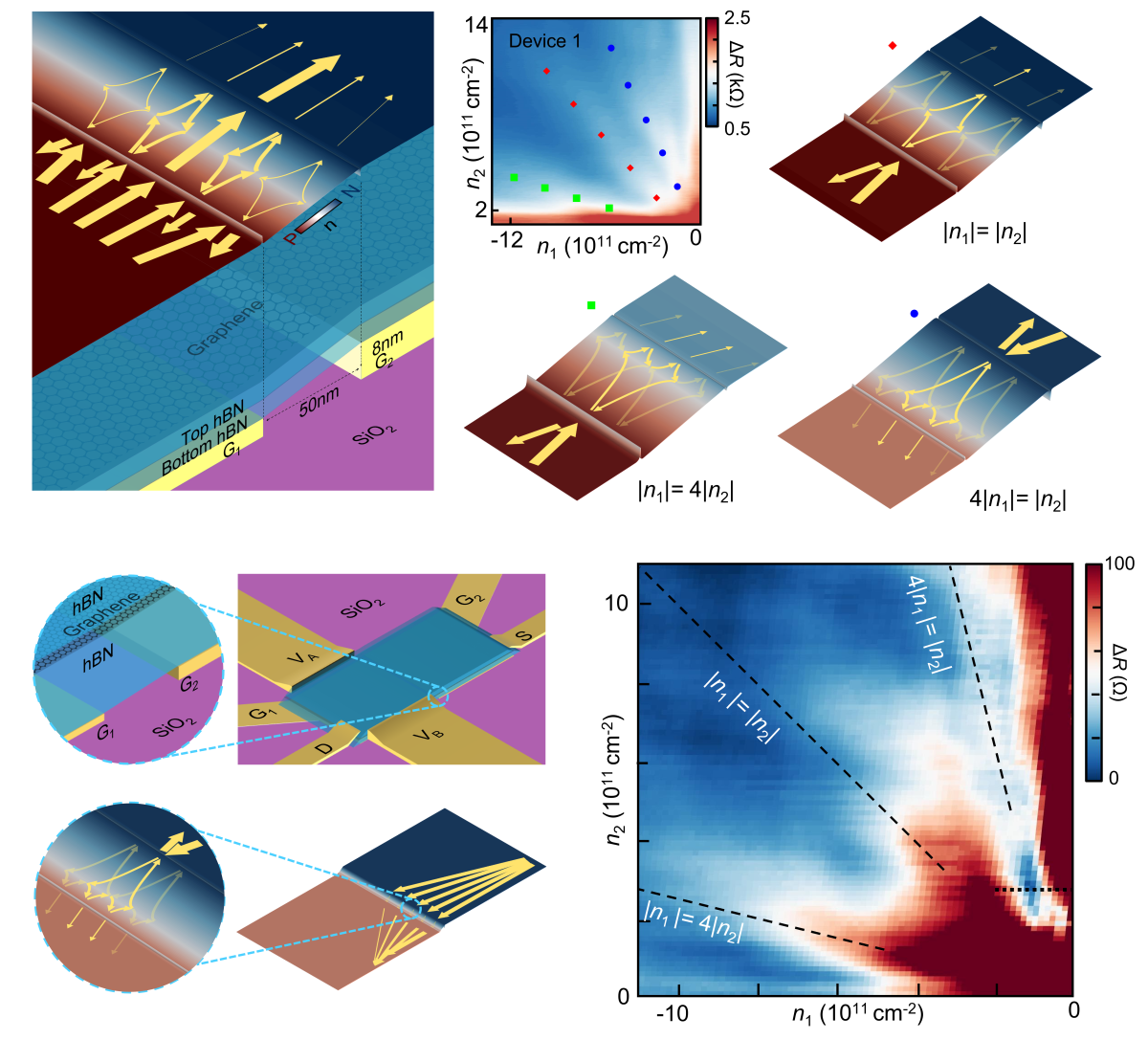Electron-optics
We report an electrically tunable graphene quantum switch based on Dirac fermion optics (DFO), with electrostatically defined analogies of mirror and collimators utilizing angle-dependent Klein tunneling. The device design allows a previously unreported quantitative characterization of the net DFO contribution and leads to improved device performance resilient to abrupt change in temperature, bias, doping, and electrostatic environment. The electrically tunable collimator and reflector demonstrated in this work, and the capability of accurate in situ characterization of their performance, provide the building blocks toward more complicated functional quantum device architecture such as highly integrated electron-optical circuits.
Graphene Transistor Based on Tunable Dirac-Fermion-Optics
K. Wang, M. M. Elahi, K. M. M. Habib, T. Taniguchi, K. Watanabe, A. W. Ghosh, G.-H. Lee, P. Kim
PNAS April 2, 2019 116 (14) 6575-6579
Impact of geometry and non-idealities on electron ‘optics’ based graphene p-n junction devices
M. M. Elahi, K. M. M. Habib, K. Wang, G.-H. Lee, P. Kim, A. W. Ghosh
Appl. Phys. Lett. 114, 013507 (2019)
Quantum Transistor Based on Dirac-Fermion Optics

Gate-tunable Veselago Interference in a Bipolar Graphene Microcavity

The relativistic charge carriers in monolayer graphene can be manipulated in manners akin to conventional optics. Klein tunneling and Veselago lensing have been previously demonstrated in ballistic graphene pn-junction devices, but collimation and focusing efficiency remains relatively low, preventing realization of advanced quantum devices and controlled quantum interference. Here, we present a graphene microcavity defined by carefully-engineered local strain and electrostatic fields. Electrons are manipulated to form an interference path inside the cavity at zero magnetic field via consecutive Veselago refractions. The observation of unique Veselago interference peaks via transport measurement and their magnetic field dependence agrees with the theoretical expectation. We further utilize Veselago interference to demonstrate localization of uncollimated electrons and thus improvement in collimation efficiency. Our work sheds new light on relativistic single-particle physics and provide a new device concept toward next-generation quantum devices based on manipulation of ballistic electron trajectory.
Gate-tunable Veselago Interference in a Bipolar Graphene Microcavity
Xi Zhang*, Wei Ren*, Elliot Bell, Ziyan Zhu, Kan-Ting Tsai, Yujie Luo, Kenji Watanabe, Takashi Taniguchi, Efthimios Kaxiras, Mitchell Luskin, Ke Wang
Nature Communications volume 13, Article number: 6711 (2022)